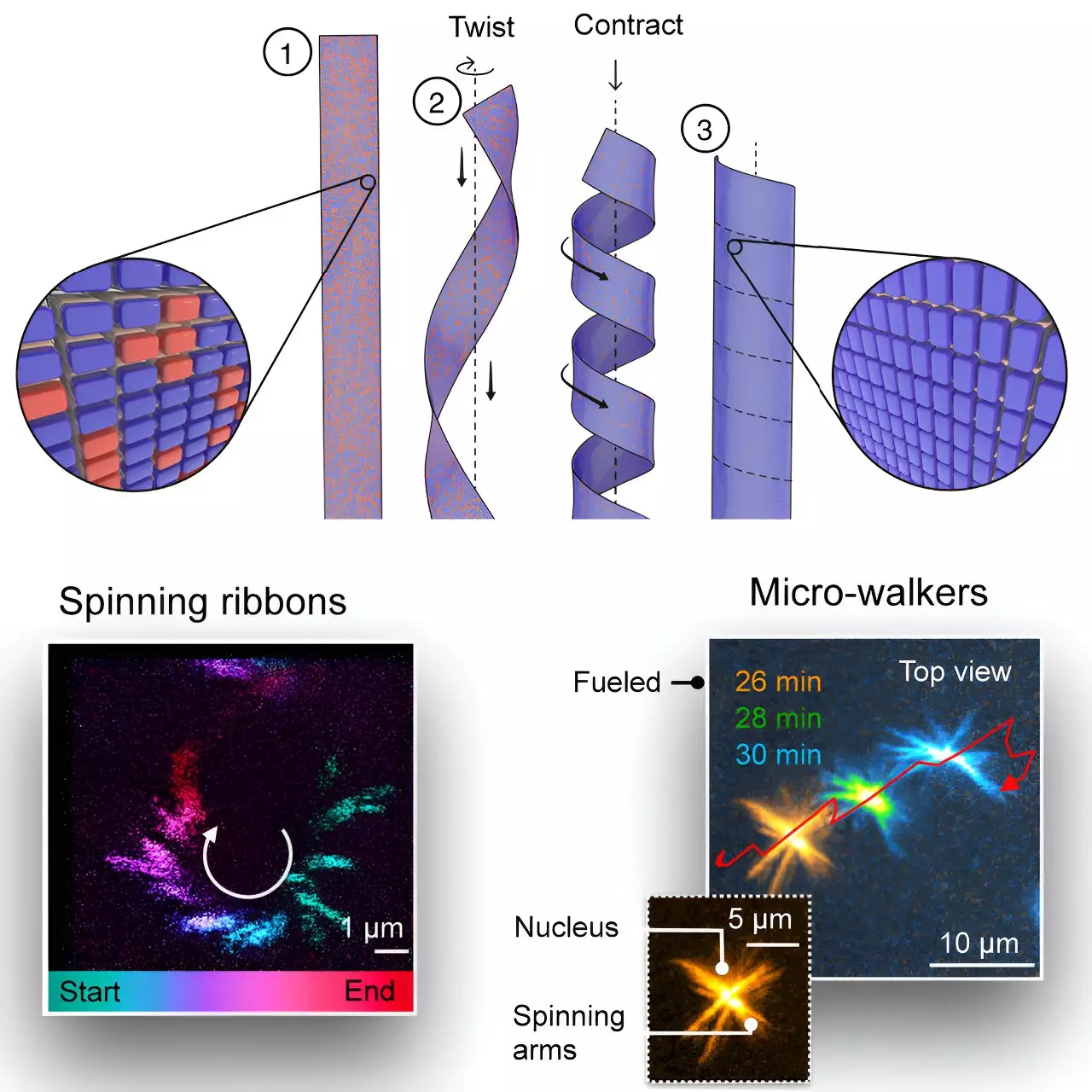Recent advancements at the Technical University of Munich (TUM) mark a significant milestone in the realm of nanotechnology. Researchers have successfully engineered a miniature artificial motor operating at the supramolecular level that showcases remarkable power and motion capabilities. This innovation, which may transform future medical and technological applications, stems from a fascinating combination of chemical engineering and biomimicry.
At the core of this development is a little ribbon composed of specialized molecules. When provoked by the introduction of energy, this ribbon assumes a fin-like shape, enabling it to propel small objects forward. Unlike previous iterations of molecular motors that primarily relied on external power sources, this new model utilizes a chemical fuel—specifically adenosine triphosphate (ATP). Previously, the conversion of chemical energy into rotational energy had only been observed in biological organisms, such as archaea, using ATP to drive their flagellar motion.
Harnessing Nature’s Designs
The remarkable feature of this motor is its synthetic replication of biological processes, an area that has remained elusive until now. Guided by the expertise of researchers Brigitte and Christine Kriebisch along with Professor Job Boekhoven, the team meticulously engineered peptide ribbons that are only a few micrometers in length and nanometers in width. Upon the application of chemical fuel, these ribbons unfold into tubular structures, propelling them into rotational motion. Science enthusiasts can even observe this process unfolding live through microscopic imaging techniques.
The implications of this motor extend beyond aesthetics; control over the speed of rotation and direction—whether clockwise or counterclockwise—can be finely tuned by adjusting the chemical fuel concentration and the molecular construction of the ribbons. Such versatility is crucial for practical applications in nanotechnology, particularly in fields requiring precise movement and task execution at a microscopic level.
Potential for the Future
One of the striking findings from the research team, which also involved collaboration with Professor Matthias Rief from the Department of Molecular Biophysics, is the motor’s ability to exert tangible force sufficient to affect micro-sized objects. Such abilities open the door to innovative applications, including the development of collective “micro-walkers.” These could coordinate movements on surfaces, expanding possibilities for future medical deployables, such as drug delivery systems within the human body.
Despite the excitement surrounding this discovery, researchers acknowledge that the current choice of chemical fuel is not yet suitable for medical uses, as it poses potential risks to human health. Nevertheless, the foundational work laid out in this study is a promising step toward creating biocompatible micro-vehicles capable of revolutionizing diagnostic and therapeutic methods.
As the TUM researchers continue to refine and enhance their findings, the broader implications of this artificial motor and its potential applications will become clearer, signifying a potentially transformative leap in the field of nanotechnology and its intersection with medicine. The future for these tiny motors looks bright, and one can only speculate about the myriad of advancements that await us.


Leave a Reply